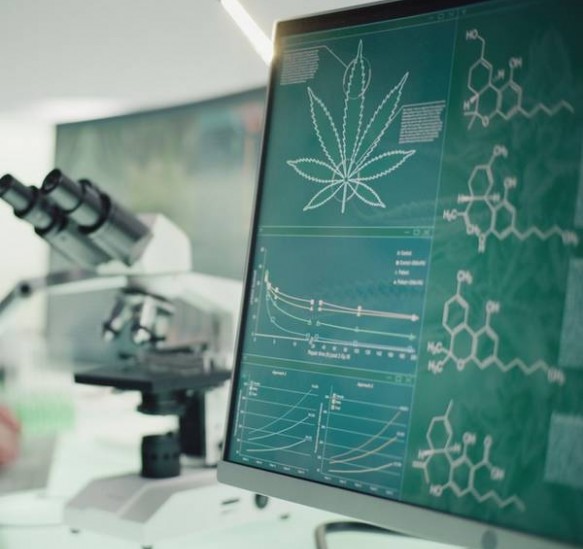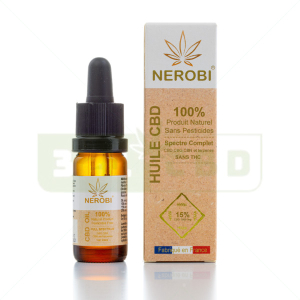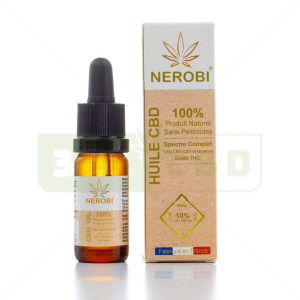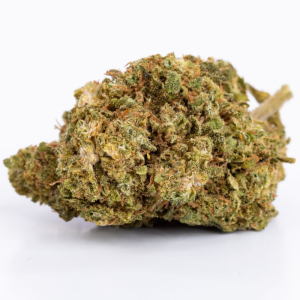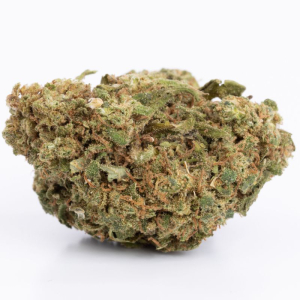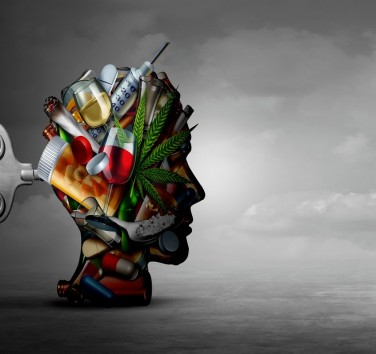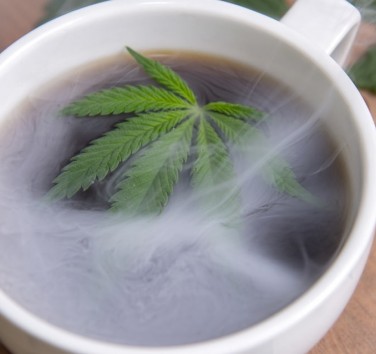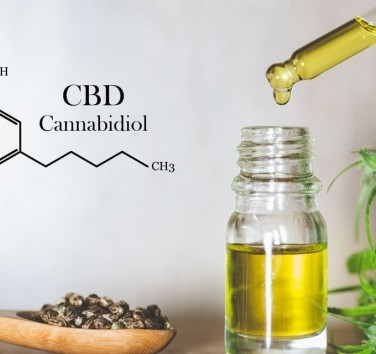What is H4CBD?
In the large family of cannabinoids in the hemp plant, I call it H4CBD! If you are an aficionado of hemp pleasures, you have probably already come across this somewhat barbaric acronym which abounds everywhere in the press specializing in well-being and relaxation products. We know cannabidiol, this non-psychotropic cannabinoid that is essentially extracted from Cannabis L. Sativa and Cannabis Indica varieties. But what is H4CBD?
The acronym refers to Hexahydrocannabidiol, a cannabinoid synthesized in the laboratory from CBD. For chemistry enthusiasts, it goes through a hydrogenation reaction, converting the two carbon-carbon double bonds of the limonene part of CBD into single bonds with the addition of four hydrogen atoms, hence the "H4 or more specifically, "H4". It is for this reason that you will also find H4CBD under the name of hydrogenated CBD, or, more rarely, of quadri-hydrogenated CBD, not to confuse it with bi-hydrogenated CBD (H2CBD). The process is also very similar to that which leads to the manufacture of margarine from vegetable oil!
H4CBD molecule: why was it synthesized in the laboratory?
The first occurrence of H4CBD in history dates back to 1940, in the midst of World War II, when Professor A.R Todd's research team carried out a catalytic hydrogenation of Egyptian hashish to obtain H4CBD for scientific and experimental purposes. .
About 66 years later, in 2006, a group of scientists from the American Chemical Society discovered that H4CBD had a very high binding affinity for the "CB 1" receptor of the human endocannabinoid system, thus with effects anti-inflammatory and soothing tenfold compared to the cannabinoids naturally produced by the hemp plant, namely CBD, CBC, CBN and CBG.
So here is the answer to the question "What is the point of H4CBD": it has a greater affinity with the endocannabinoid system and its anti-inflammatory and soothing effects are said to be more intense than those CBD.
%20(1)%20(1).jpeg)
H4CBD vs. CBD: what are the differences?
Let's now explore the 4 major differences between H4CBD and CBD to help you form your own opinion on this molecule.
#1 H4CBD vs. CBD: a source difference
CBD and H4CBD both come from the hemp plant. But while CBD is a direct derivative of cannabis, from which it is extracted by CO2 or alcohol processes, H4CBD is obtained by artificially modifying cannabidiol, by hydrogenation, as explained more high.
So H4CBD is technically a synthetic cannabinoid…but we're not into a "massively synthetic" molecule either. In fact, H4CBD is as synthetic as margarine! It simply comes from a small modification of CBD. Moreover, the latter can also be artificially synthesized, but there is no point in doing so, it is so abundant in nature.
#2 H4CBD vs. CBD: a structural difference
H4CBD has therefore been slightly modified, with the addition of four additional hydrogen atoms to the limonene head of cannabidiol. This minor structural change obviously boosted the cannabinoid's affinity for the endocannabinoid system's "CB 1" receptor, which explains the tenfold effects experienced by consumers, which brings us to the next point…
#3 H4CBD vs. CBD: a difference in the intensity of the effects experienced
Let's be very clear on this point: the scientific literature has not yet sufficiently explored the intensity of the effects of H4CBD compared to CBD. We simply have two (small) studies that we are going to summarize for you, as well as feedback from a few consumers who have experienced the molecule. Here's what to remember:
- Since the structural difference between H4CBD and CBD is very minimal, the virtues of both molecules are similar. We are not on a difference of type, but (obviously) on a difference of intensity. Thus, the consumption of H4CBD is accompanied by analgesic properties (painkiller), anti-inflammatory properties, soothing and relaxing effects as well as an antioxidant action, like CBD and other cannabinoids from the hemp plant. (CBG, CBC, CBN, etc.);
- It was a study published in 2006 that discovered the tenfold affinity of H4CBD with the "CB 1" receptors of the endocannabinoid system. The more curious can read the full paper here. This study was accompanied by several allegations and a lot of speculation. We have also read in the press that H4CBD is up to 100 times more powerful than CBD. Let's be clear: for the moment, no study can confirm this estimate which seems excessive;
- A small study published in June 2017 investigated this question and confirmed that the affinity of H4CBD for the "CB 1" receptors of the endocannabinoid system was stronger than that of CBD. You can read the study here.
- Finally, feedback from the field is almost unanimous: consumers accustomed to CBD and who have experienced H4CBD confirm that the effects of the synthetic molecule (H4CBD) are much more intense than the effects of the natural molecule (CBD and equivalent). Note: consumers have also pinpointed a slight psychotropic effect, probably linked to the presence of THC at a concentration higher than the authorized 0.3%.
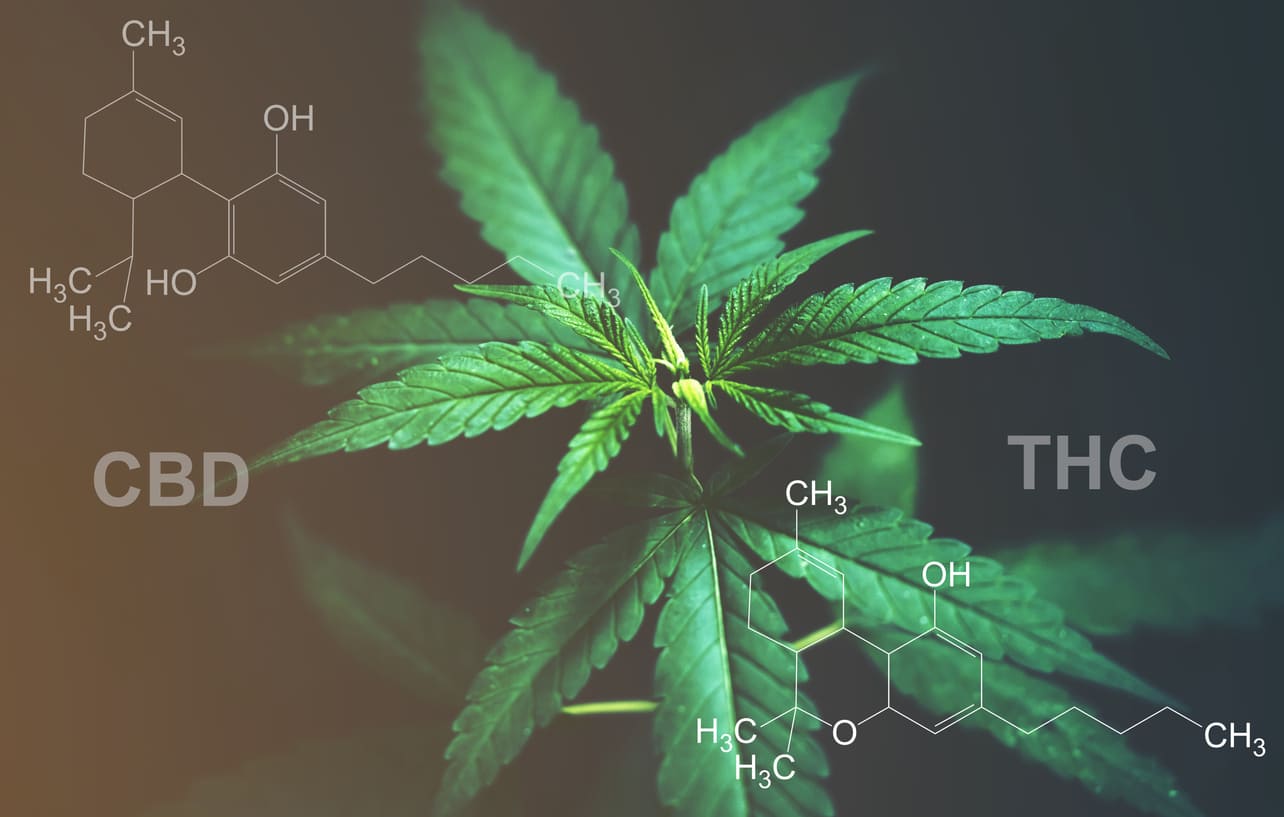
#4 H4CBD vs. CBD: what about legality?
We will not go back on the legality of cannabidiol and all the non-psychotropic cannabinoids of the hemp plant. We have developed this subject extensively in our dedicated article . What should be remembered is that in France, cannabinoids such as CBD, CBC, CBN and CBG can be freely consumed and marketed, provided that they respect the hygiene conditions in force and that their concentration in THC, a psychotropic molecule, i.e. at a trace level (less than 0.3%).
H4CBD is also affected by this law which is, it should be remembered, the direct consequence of the decision of the Court of Justice of the European Union (CJEU) in 2020, and which considered that the prohibition of marketing of CBD in the EU was a violation of the principle of free movement of goods as cannabidiol was neither a narcotic nor a medicine.
Thus, CBD and H4CBD are both legal in France, subject to compliance with the two conditions mentioned. But there is something to keep in mind. So let's open the legal parenthesis.
What are the effects of H4CBD?
As explained above, the scientific literature around H4CBD is still embryonic, but certain data from recent studies can give us some indicators.
Already, given their very similar molecular structures, H4CBD and CBD probably produce the same effects. Thus, when H4CBD is ingested, inhaled or consumed sublingually, it interacts with the receptors of the endocannabinoid system to induce the following effects:
-
A soothing and relaxing effect, useful for those suffering from stress, anxiety or episodes of insomnia;
-
An anti-inflammatory action, with a particular affinity for muscles and joints. If applied topically, H4CBD will then express its anti-inflammatory effects on the skin;
-
Analgesic properties, thus calming acute or chronic pain, of low to moderate intensity;
-
An antioxidant action which helps neutralize free radicals.
As explained in this scientific study carried out in 2006, H4CBD, like all hydrogenated forms of cannabidiol, appear to have a very high affinity for the “CB1” neuroreceptors found in the brain. To understand the impact of this high affinity, we must return to the role of these neuroreceptors in the body.
CB1 receptors regulate six major physiological functions through a mechanism of modulation of neuronal signals:
-
When activated, CB1 receptors influence the pre-synaptic activity of neurons. They can reduce or increase the release of different neurotransmitters (such as GABA, glutamate, dopamine, serotonin) depending on the context and thus modulate neuronal excitability and signal transmission in the brain;
-
CB1 receptors inhibit the release of pain neurotransmitters to reduce the perception of pain;
-
CB1 receptors located in the hypothalamus stimulate the feeling of hunger and influence energy metabolism, which leads to a (slight) increase in appetite ;
-
By modulating the release of neurotransmitters like serotonin and dopamine, CB1 receptors regulate mood by limiting stress, anxiety and potentially depression;
-
CB1 receptors affect synaptic plasticity, that is, the ability of synapses to strengthen over time, with a direct impact on the capacity learning and memory;
-
CB1 receptors prevent lesions neurons by reducing the excessive release of certain neurotransmitters.
H4CBD therefore seems to influence, in a way that we do not yet know, the functioning of these endocannabinoid receptors.
Will H4CBD meet the same fate as HHC in France?
On June 13, 2023, the National Agency for the Safety of Medicines and Health Products (ANSM) banned hexahydrocannabinol (HHC) in France. What does it have to do with H4CBD? It's simple: HHC is also a synthetic molecule made in the laboratory by a process of hydrogenation. Like H4CBD, HHC was first synthesized in the 1940s…by the same team that resulted in H4CBD. After being marketed for a few months, since the end of 2022, HHC is now illegal in France (production, sale and use). Could H4CBD have the same sentence? Nothing is less certain.
Indeed, it was not until the media coverage and the enthusiasm of some consumers, especially those accustomed to legal hemp, that the ANSM cracked down. But there is a major difference that could work in favor of H4CBD... and it's doctor Joachim Müllner who explains it on Doctissimo: "Unlike H4CBD, HHC is a derivative, not of CBD, but of cannabis containing significant concentrations of THC from the hydrogenation of THC molecules, not CBD". And to complete: "Unlike CBD, and therefore most probably H4CBD, HHC has effects close to classic cannabis with high THC levels: 'dysleptic' effects, i.e. altering normal brain function”.
For now, H4CBD is not yet available in France, but it should be in the short term. "This very recent derivative […] could be offered in liquid form this summer in France", thinks CNEWS knows.
Of course, at 321CBD, we follow this file very closely, both on the legal and scientific aspects. As always, we adopt a policy of caution and precaution and choose not to offer H4CBD-based products on our online store until we have more visibility. We will continue to inform you about this molecule which seems to arouse a certain enthusiasm in the community of legal hemp aficionados.

